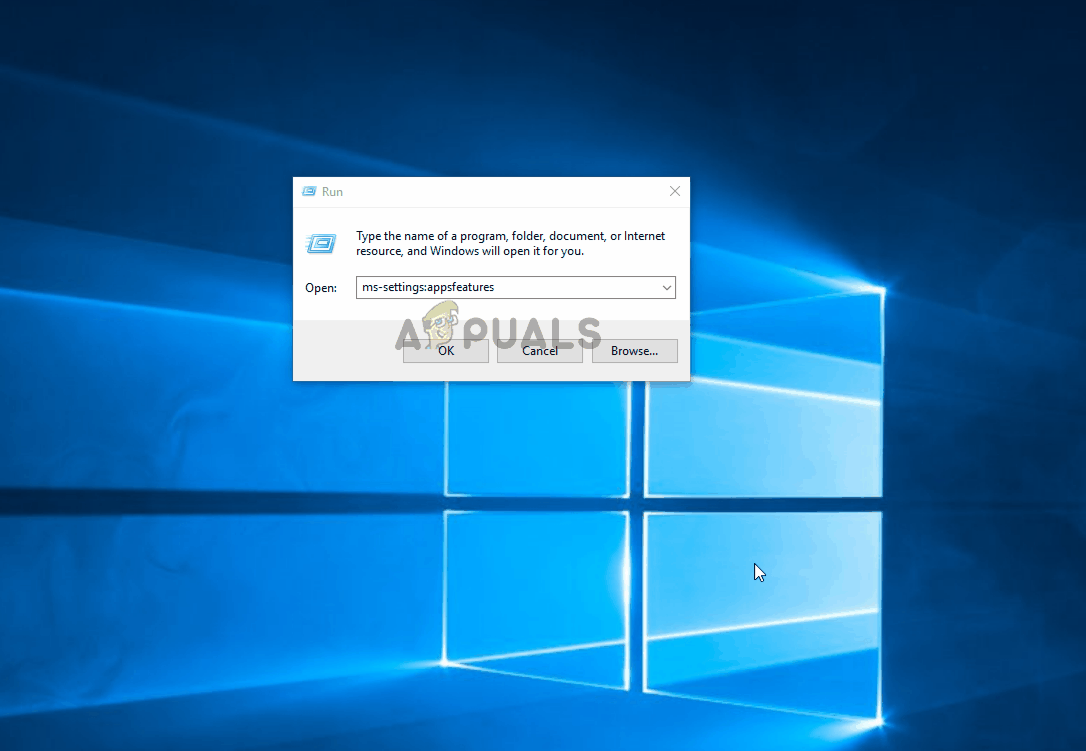How to Fix Netflix App Volume Remaining at 100%
Several users have been reaching us with questions after noticing that they are unable to control the Netflix sound volume on Windows 10. Most affected users are reporting that lowering the sound through the Netflix app doesn’t work as the volume remains at 100%. The only thing that works for them is to lower the Windows master volume. As it turns out, the issue seems to be exclusive to Windows 10.

What is causing the Netflix sound to remain at 100%?
We investigated this particular issue by investigating various user reports and analyzing the most common repair strategies that are commended for this particular issue. There are a couple of different culprits that are known to create this issue:
- Exclusive mode is enabled for the default playback device – In most cases, this problem will occur because of the way Netflix is designed to pass DTS or Dolby bitstreams. Some users have been able to resolve the issue by accessing the Properties screen of the active playback device and disabling Exclusive Mode ( a setting that allows applications to take exclusive control).
- Netflix app bug – This Netflix bug is around for at least one year and has been reported hundreds of users, but still remains unpatched. If this scenario is applicable, you should be able to resolve the issue by muting Netflix (using the in-app icon) and then unmuting after several seconds.
- Bad UWP installation – Based on several user reports, this issue can also occur if you’re dealing with a botched UWP installation of the Netflix app. In this case, you can resolve the issue by either resetting the application or by uninstalling and then re-downloading the latest version.
If you’re currently struggling to resolve the same Netflix app sound issues, this article will provide you with several troubleshooting strategies. Down below, you’ll find a collection of methods that other users have successfully used to fix the problem once and for all.
Each of the methods featured below is confirmed to work by at least one affected users. To remain as efficient as possible, we advise you to follow the methods in the order they are aligned (we ordered them by efficiency and difficulty).
One of the fixes below is bound to resolve the issue regardless of the culprit that is causing it. Let’s begin!
Method 1: Disabling Exclusive Mode
In most cases, this particular issue occurs because the Netflix app is designed to pass DTS or DOLBY bitstreams through HDMI / SPDIF. Streams like this cannot be interrupted because the audio is already encoded – No audio can be added to them while they’re making their way to a receiver like a TV.
If you’re using DTS or Dolby bitstreams through HDMI or SPDIF, this is the reason why the volume remains at 100% even if you interact with the slider in the Netflix app. Fortunately, you can resolve the issue in this case by disabling Exclusive Mode for the Playback device that you’re currently doing.
Several affected users have reported that the issue was resolved after they disabled exclusive mode and restarted their machine. Here’s what you need to do:
- Press Windows key + R to open up a run dialog box. Then, type ” mmsys.cpl” and press Enter to open up the Sound window. If you’re prompted by the UAC (User Account Control), click on Yes to grant admin access.
- Once you get there, select the PlayBack tab, then right-click on the playback device that is currently active and choose Properties from the context menu.
Note: It’s important that you’re targeting the right playback device. Look for the device that has a green checkmark near its icon. That’s the one that is currently active. - When you’re inside the Device Properties screen, select the Advanced tab from the horizontal menu at the top of the window.
- Inside the Advanced tab, go to the Exclusive Mode section and uncheck the box associated with Allow applications to take exclusive control of this device.
- Click Apply to save the change, then restart your computer to force the changes to take effect.
- Once the next startup sequence is complete, open the Netflix app again and see if the issue has been resolved.

If you’re still unable to control the volume inside the Netflix app (it remains at 100%), move down to the next method below.
Method 2: Muting Netflix
This particular issue can also occur due to a bug that was left unpatched for more than a year now. In this case, you might be able to resolve the issue temporarily by using a simple mute – unmute trick.
Note: But keep in mind that even if this method is successful, it will only resolve the issue momentarily. You will likely need to repeat the same action the next time you open Netflix after a fresh startup. If you’re looking for a permanent solution, move directly to Method 3.
Several affected users that we’re encountering the exact same issue with the Netflix sound volume have reported that they managed to fix it by using the mute icon, waiting a few seconds and then unmuting. This will bring the volume bar to 50% from 100% and allow you to control it.
Try it for yourself and see if it works for you.

If this method wasn’t successful or you’re looking for a permanent fix, move down to the next method below.
Method 3: Resetting Netflix’s App Data
Another popular fix for the Netflix app volume is to reset the app data & cache. If the problem was being caused by a glitch, this procedure should resolve it for good. Keep in mind that this procedure is less intrusive than an uninstallation and will only delete data that was downloaded or generated after the initial installation. So it will leave all your core files alone.
Several users have reported that they managed to resolve the volume issue by clearing the app data & cache of the Netflix app before performing a system restart.
Here’s a quick guide on resetting the app data & cache of the Netflix app:
- Press Windows key + R to open up a Run dialog box. Then, type “ms-settings:appsfeatures” inside the text box and press Enter to open up the Apps & Features tools of the Settings app.
- Once you get there, go to the Apps & Features section and scroll down through the list of applications and locate the Netflix app.
- Once you see it, click it once and then click on Advanced options (under Name and Publisher).
- Inside the Properties screen of Netflix, scroll down to the Reset tab and click on Reset.
- Click Reset once again at the confirmation prompt to delete the application cache & data.
- Once the procedure is complete, restart your computer and see if the issue has been resolved once the next startup is complete.
- If you’re still encountering the same issue, follow step 1 to 4 again to return to the Netflix Properties menu. Once you get there, click on Uninstall and then confirm at the prompt to uninstall the Netflix application altogether.
- Restart your computer and wait for the startup sequence to complete. Then, press Windows key + R to open up a Run dialog box. Next, type “ms-windows-store://home” and press Enter to open um Microsoft Store.
- Inside the Microsoft Store, use the search function to find Netflix, then click on Install to re-download the app.
- See if the procedure has been successful and you’re able to adjust the in-app sound volume slider without issues.






